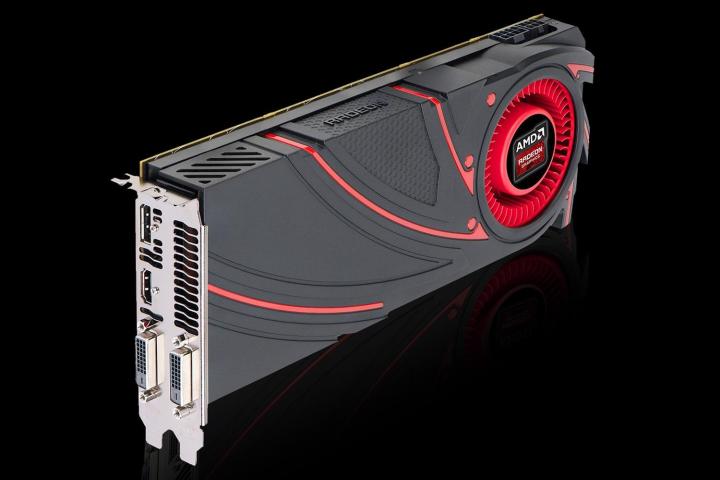
If you search for “R9 290X” right now on Froogle, the online shopping portion of Google’s search engine, you’ll likely find that graphics cards based on the GPU found in AMD’s Radeon R9 290X graphics card are being sold for over $700 despite the fact that the vanilla AMD version of the card went for $550 when it was released. For example, SuperBiiz is selling the Sapphire AMD Radeon R9 290X 4GB card for $739.99. The MSI Radeon R9 290X card is selling for $710 by the same site. Then there’s the XFX Force Radeon R9 290X Core Edition, which is currently available for pre-order at B&H’s site for $700. All three of those figures are significantly higher than $550, and though AMD doesn’t directly work with these manufacturers on card pricing, when we spoke to AMD, they told us that these companies usually follow the pricing models set by AMD. On top of that, though R9 290X cards can be had today, just a few days ago, they were virtually out of stock no matter where we looked.
So why the deviation? Two reasons, primarily, one of which you may already know about.
Mining crypto-currencies like Bitcoin and Litecoin is becoming a huge deal, so much so that when we spoke to AMD, they confirmed reports that the heavy interest in altcoin mining has played a part in the price hikes and supply shortages that AMD cards have experienced recently. However, AMD clued us in on a different reason altogether. If you’ve ever heard the saying “the simplest explanation is often the best one,” then you might smack your forehead once you read the next few lines.
Virtually all of the companies that make graphics cards based on AMD GPUs like Sapphire, XFX, ASUS, MSI and others, are based in Taiwan and China, along with their manufacturing facilities. Ask yourself then, what notably holiday occurred recently that might garner the attention of a significant amount of people in Asia?
The Chinese New Year.
When we spoke with AMD, they told us that the Chinese New Year wreaked havoc on supplies of AMD graphics cards, like the Radeon R9 290X. This isn’t like Memorial Day Weekend where the workers got a Monday off and that was it: AMD informed us that this was a two week long celebration, so those facilities that make AMD cards were essentially shut down for two weeks because of the holiday. According to AMD, this two week long period began on January 31, the day of the Chinese New Year.
So just do the math: high demand plus all factories shut down equals shortages and price hikes. Makes sense, doesn’t it?
AMD also told us that since the celebrations concluded, the supply stream of AMD cards has continued. Though prices are abnormally high for the current crop of R9 290X cards that are available, the fact that any are currently available to begin with lends credence to the statements that AMD provided us with.
What do you think? Sound off in the comments below.



